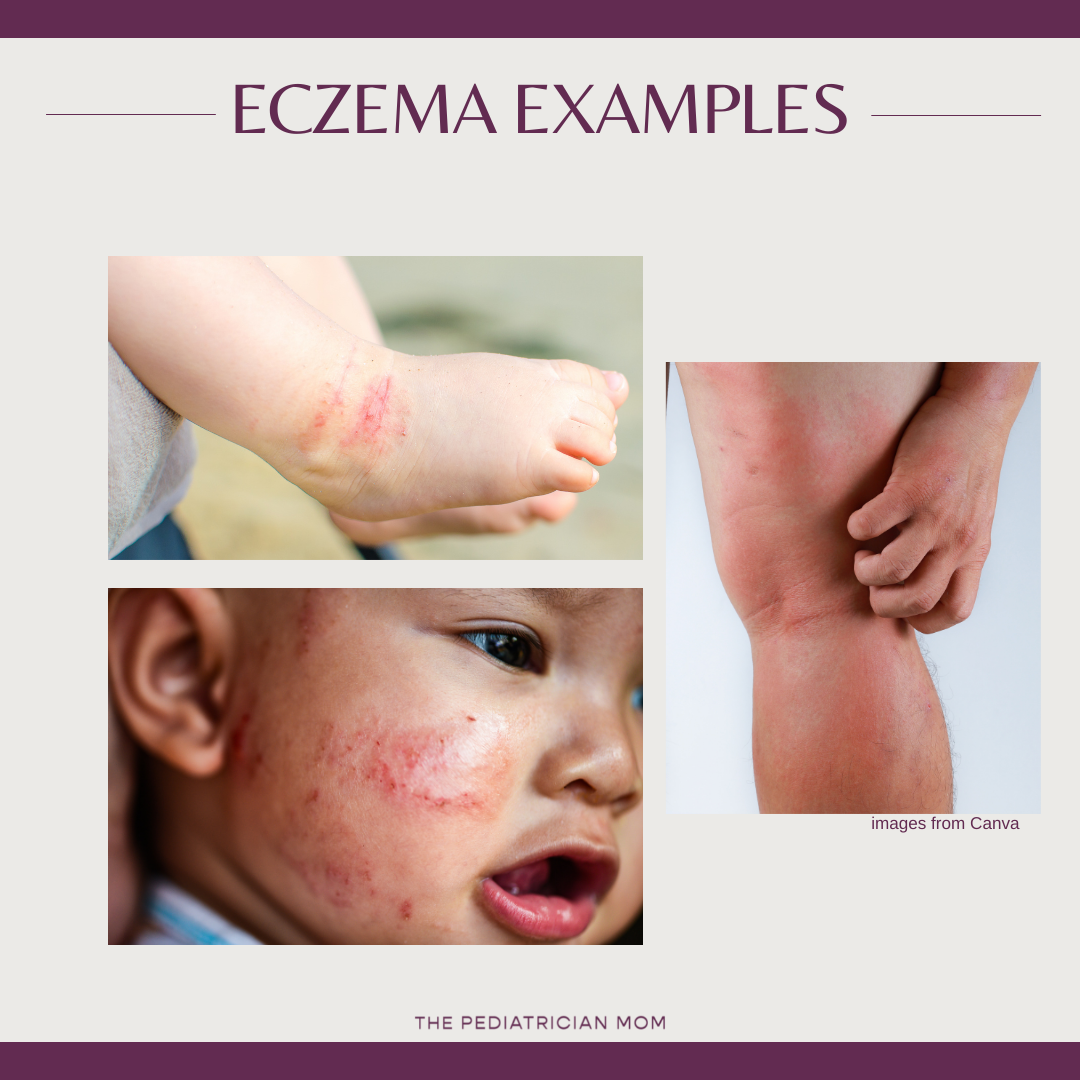Eczema: An Overview
Eczema is a common (and frustrating) childhood rash that is often nicknamed “the itch that rashes.”
If your child has been diagnosed with this condition, the amount of information online is overwhelming. Here is a helpful starting point.
What is Eczema?
Eczema is an itchy rash that is seen in people with defects in their skin barrier. It can range from mild to every severe, and is often triggered by exposures. Although many people associate it with food allergies, these are not the most common trigger. The most common type is called atopic dermatitis, and sometimes the terms are used interchangeably (although should not be).
One of the most common questions we receive is how to tell the difference between eczema and standard dry skin, which I answer over on today’s instagram post.
Symptoms?
Appearance: In kids with fair skin, eczema patches are scaly and usually look pink or red. In melanated kids, they are scaly too but usually look darker red or purple-brown. Eczema can also lighten the skin if under-treated.
Timing: The rash tends to come and go, sometimes on a daily basis. It is also often worse in winter. See my post on eczema triggers for more.
Location of rash: There are some classic locations we see this rash (based on age) but eczema can be really occur anywhere on the body.
Triggers
Eczema can have many triggers. These irritate the skin and lead to scratching, which then damages the skin surface, leading to further inflammation (and more itching).
Eczema triggers fall into 3 separate categories (for a more in-depth look at the most common triggers, along with what to do about them, stay tuned for an upcoming post).
Irritants (anything that irritates the skin: detergent, soap, sweat, fabrics)
Allergens (such as dust mites or cat dander; in some cases, certain foods although this is not as common as you might think)
Injury (anything that traumatizes the skin, such as scratching, or certain viruses such as Hand, Foot & Mouth)
The Pediatrician Mom Tip: look for the National Eczema Association Seal of Acceptance when choosing products for your child.
What does eczema look like?
Who gets eczema?
There is a strong genetic component (for monozygotic twins, if one develops eczema, there is an 80% likelihood their twin will as well!) It also tends to run in “atopic” families (it runs along with asthma and allergic rhinitis in these families).
Severe eczema is also considered the most significant risk factor for developing a food allergy. See my separate post on this.
Will my child outgrow it?
Probably. It tends to get better with age, although there often remains a tendency towards sensitive skin. Sometimes these kids will go on to develop other conditions, such as allergies or asthma.
Is it contagious?
No.
What are the complications?
People with eczema are at risk for developing skin infections. Always call your doctor if you suspect infection, if the rash is persistent or not responding to treatment, if your child is in pain, or if you have other concerns.
Eczema can significantly affect quality of life. Depending on how bothersome the rash is, it can interfere with sleep (due to itching) and for older children, it can also affect self-esteem and cause mood disorders (e.g., depression & anxiety). These are important complications to watch out for because they are often under-diagnosed.
Eczema can be frustrating for both parents and children, but it is treatable. This was a simplified overview, but your pediatrician, allergist or dermatologist are a great resource as well. You got this, mama!




